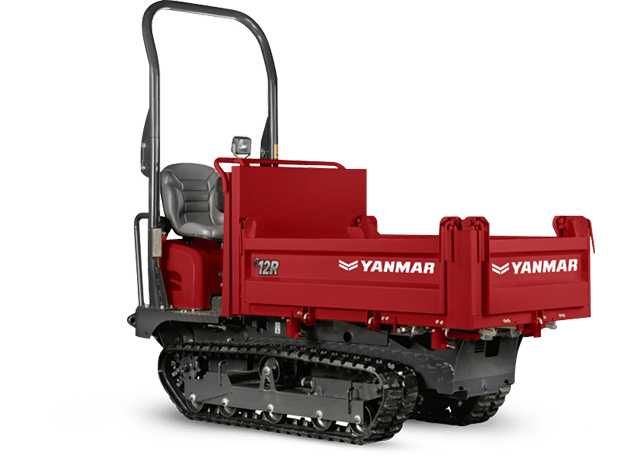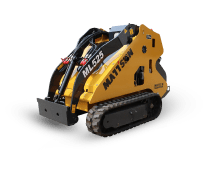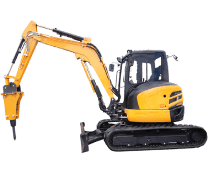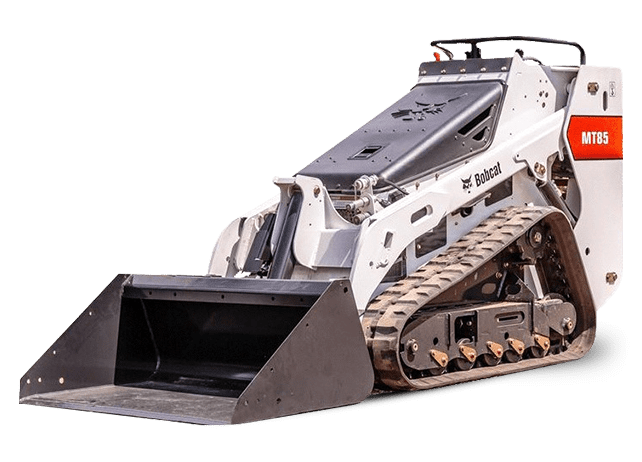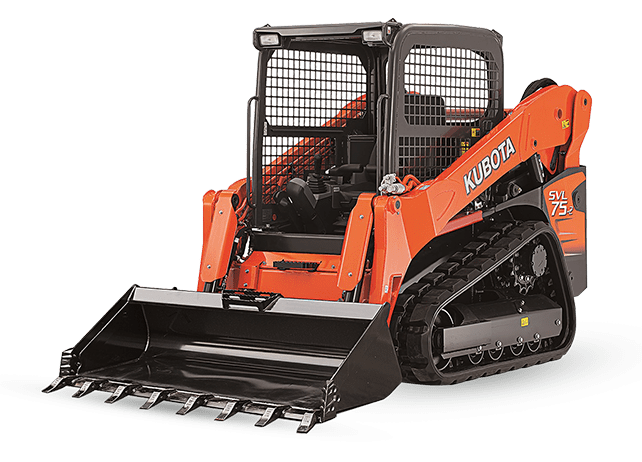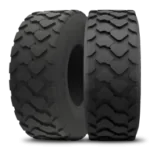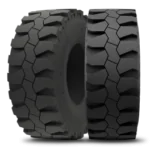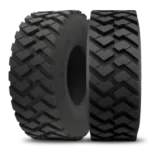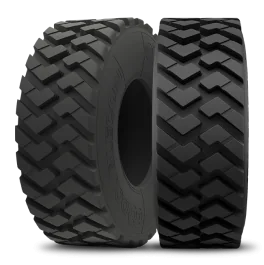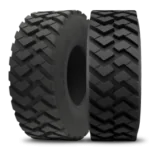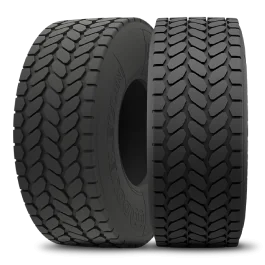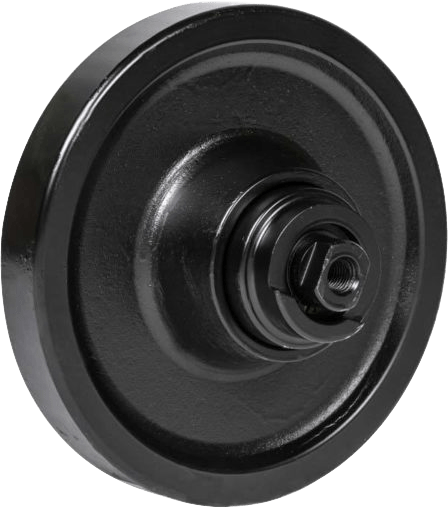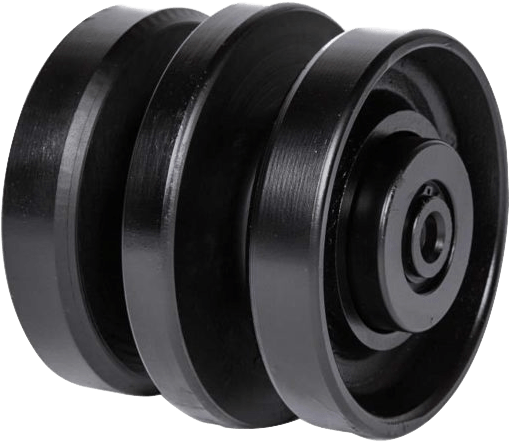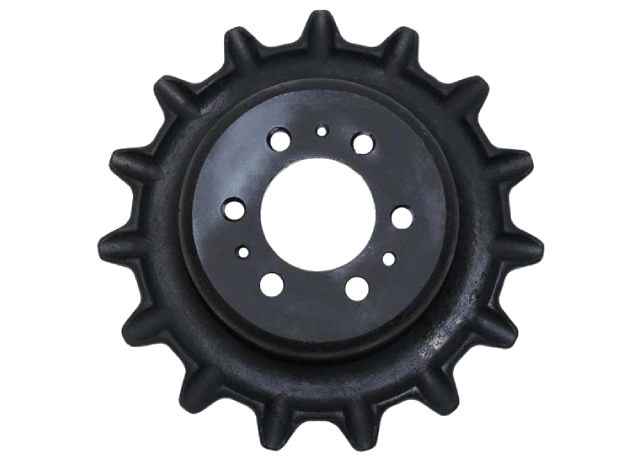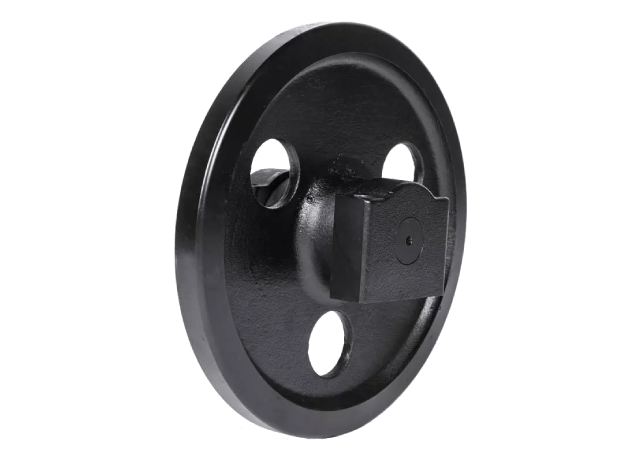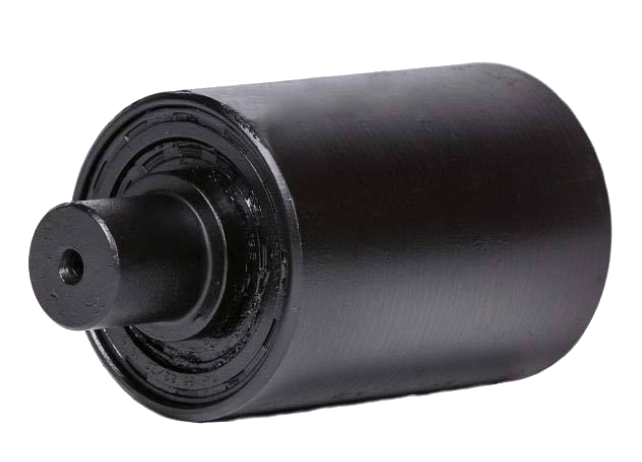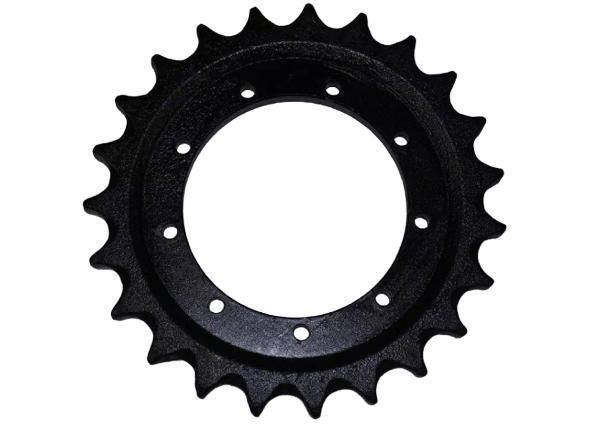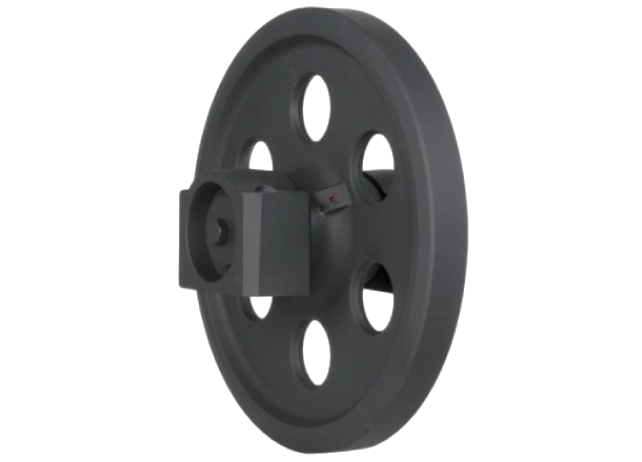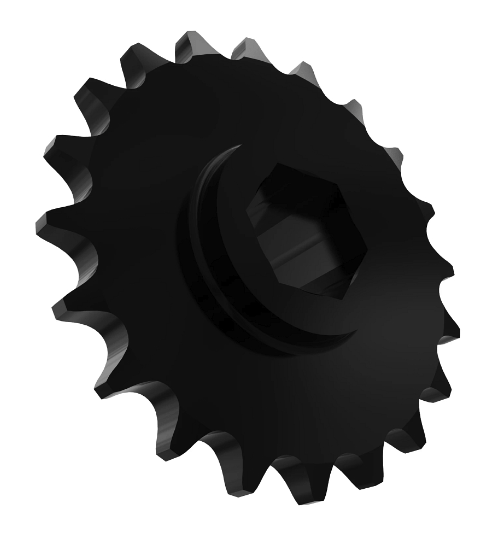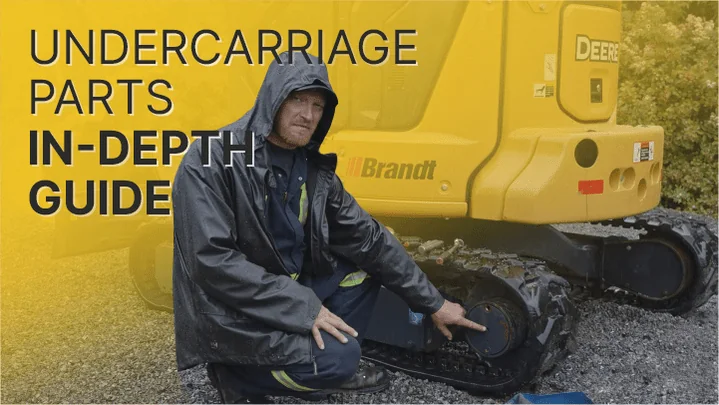The undercarriage supports and moves heavy machinery. It includes several parts like track chains, idlers, sprockets, and rollers.
The undercarriage is a critical component of heavy equipment, and its condition impacts the machine’s performance and longevity.
There are two main types of undercarriages for heavy equipment: tracked and wheeled. Ideally, and due to effectiveness, machines moving over paved surfaces have wheeled undercarriages, like skid steers. Machines moving over rough terrains, such as excavators and multi-terrain loaders, have tracked undercarriages.
Here are some specific purposes of the undercarriage of heavy equipment:
- It spreads the machine’s weight evenly, preventing it from sinking into soft ground or causing damage.
- It provides a stable platform for the machine, so it doesn’t tip over when lifting heavy objects or operating in uneven terrain.
- It protects the machine from damage by absorbing shock and vibration.
Because the undercarriage is under a lot of weight, high impact conditions, and constantly moving, its components wear faster than the rest of the equipment. That’s why the undercarriage represents a significant part of the heavy equipment maintenance and spare parts budget.
We recommend a preventive maintenance approach to avoid costly breakdowns. Some regular maintenance tasks for your undercarriage are:
- Clean accumulated debris from the tracks regularly, especially in winter.
- Add track tension for hard surfaces. Loose track tension when working on soft, muddy, or snowy surfaces.
- Check tracks, links, pins, bushings, idlers, and sprockets regularly for wear and tear.
- Do a daily check for fluid leakages under and around the undercarriage.
You can find more tasks, tips, and best practices in our Comprehensive maintenance guide.
So, what are those components wearing off within the undercarriage system? Let’s break them down.
The Components of the Undercarriage of Heavy Equipment
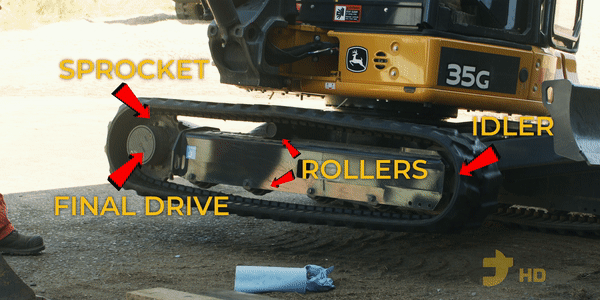
Housed inside or mounted on the track frame, you could categorize the components of an undercarriage into two groups.
Table of Content
Key Parts of the Undercarriage
Track Chains
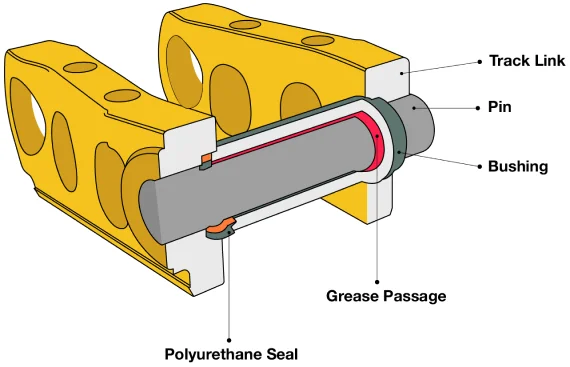
The track chains provide mobility for heavy equipment. They are two rows of individual links joined with pins and bushings.
Track Shoes
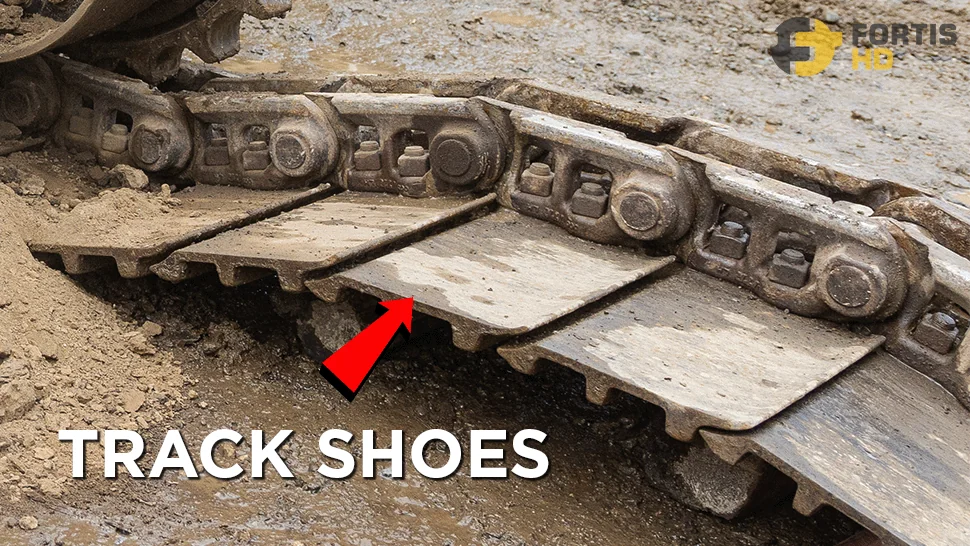
The track shoes are attached to the links via pins, hinges, or bolts to support and distribute the machine’s weight. They come in steel and rubber, each with pros, cons, and purposes depending on multiple tread patterns.
Here’s a brief comparison between steel and rubber tracks:
| Steel Tracks | Rubber Tracks |
|---|---|
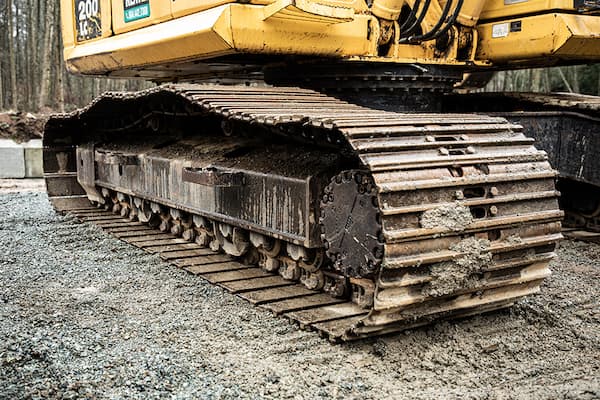 |
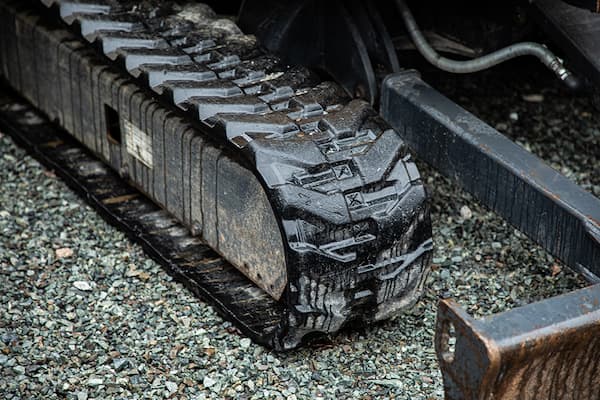 |
| Capable of withstanding extreme temperatures, harsh environments (chemicals and sharp debris), and pressure. | Offer less purchase and long-term operational cost. |
| Steel tracks weigh several hundred pounds more than rubber tracks, improving traction and stability when working on uneven terrain, slopes, and slippery conditions. | Rubber tracks are easy on the ground surface, are less noisy, and absorb vibrations providing comfort to the operator. |
| Last longer and require less maintenance. | Offer better maneuverability. |

Do you already need a new set of tracks?
Check our website’s track section to find the right set for your construction machine. We got you covered.
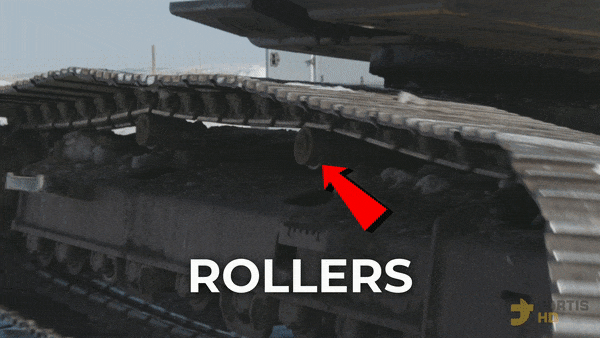
Rollers
The undercarriage has upper and lower rollers.
The bottom rollers, also known as track rollers, are bolted to the bottom of the track frame and support the machine’s weight to distribute it evenly on the track.
The upper rollers or carriers are mounted to the track frame to prevent the track from sagging.
Idlers
Depending on the final drive position design, there can be one or two idlers.
For a final drive design, there’s a front idler. It supports the front of the track and is opposite to the sprocket. The front idler aligns the track to keep it in place and maintains its tension with the adjuster.
For a high-drive design, besides a front idler, a rear idler allows the track to line up for sprocket engagement.
The Sprocket
It’s the cogwheel at the back of the undercarriage. It’s attached to the final drive unit and moves the track by engaging its teeth with the track’s bushings (similar to how a bicycle chain and sprocket work).
Other Undercarriage Components
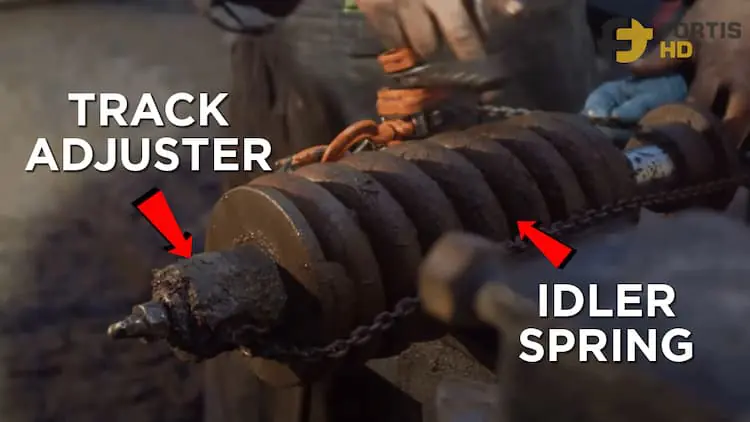
Idler Spring
Also known as the recoil spring, it’s a shock-absorbing device for loads imposed at the front of the undercarriage. Without the recoil spring, shocks and vibrations can damage sensitive parts of the machine, like the final drive and the sprocket.
Track Adjuster
Integrated with the idler spring is the hydraulic track adjuster device. It keeps proper tension on the track chain by adding or relieving lubricant in a hydraulic cylinder.
A piston pushes the front idler forward as the lubricant is forced into the cylinder. The trapped lubricant maintains proper tension. If tension is too high, you can relieve lubricant from the cylinder.
The fittings to control the lubricant, commonly known as the grease valve, are usually in a cutout in the track frame.
Track tensioning is a simple and essential task to extend the life of your undercarriage.
In this video, Keith shows you a step-by-step tutorial on adjusting track tension on a compact track loader, the Kubota SVL95. Adjusting track tension on this unit is similar to all other heavy equipment makes and models.
The Yoke
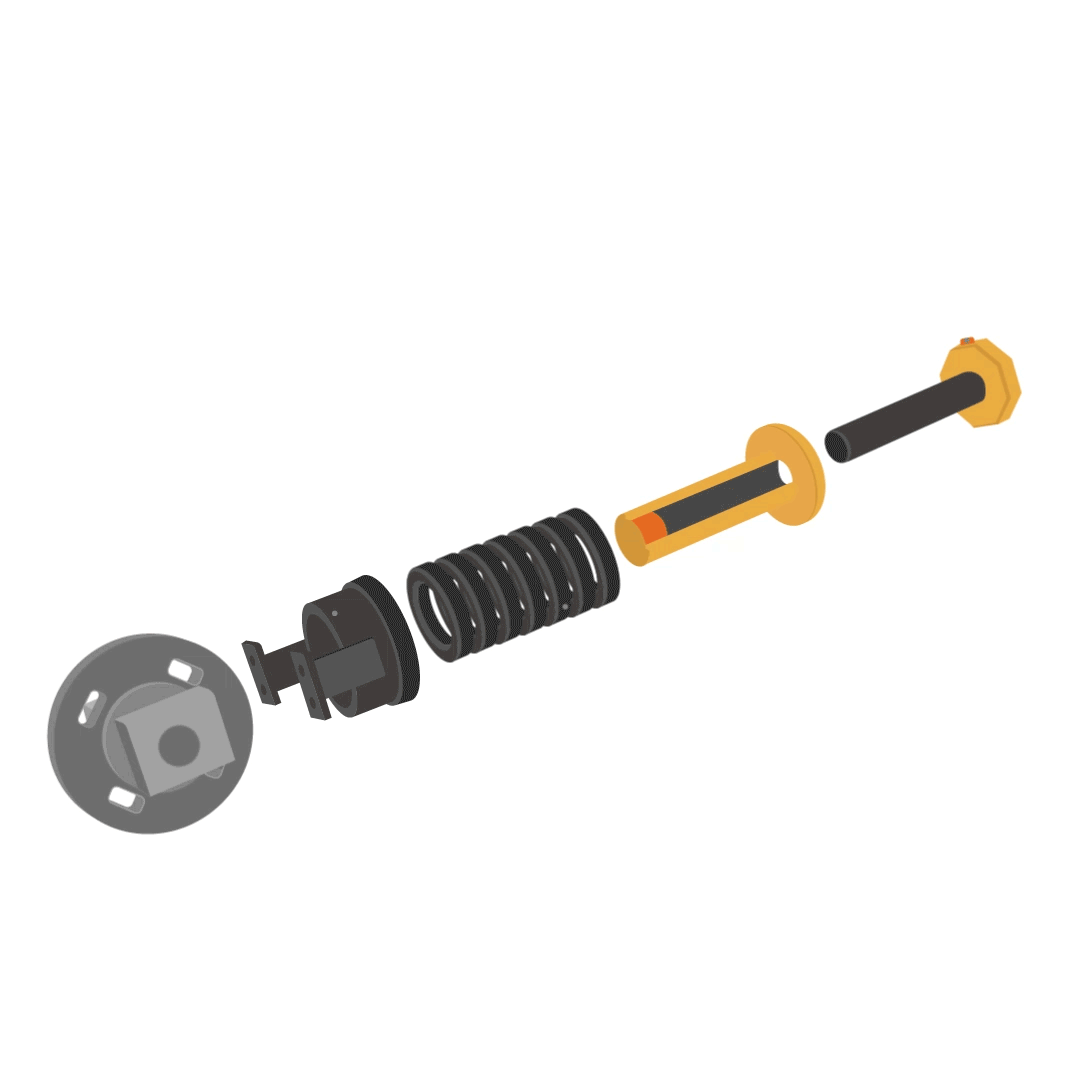
It’s a U-shaped steel bracket connecting the front idler and the track spring assembly (idler spring + hydraulic cylinder + piston) while keeping both in place.
The Final Drive
It’s the component transmitting power from the engine to the tracks. It consists of a hydraulic motor and a planetary gear system that converts the motor’s power into rotational force to turn the sprockets. Curious about how planetary gears work?
In this video, Cameron will give a 101 crash course on planetary gear sets.
The final drive can be low or high, depending on the undercarriage design. Mini excavators use a final drive design, while compact track loaders and multi-terrain loaders use final and high drive designs.
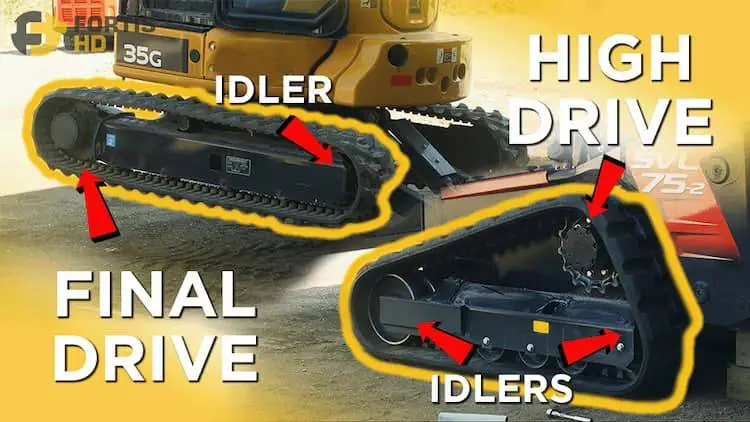
Final drives are also present on wheel loaders like skid steers. They are incorporated into the axles, transmitting power from the engine to the wheels.

Did your tires wear off?
Check our website’s tire section for high-quality tire sets from trusted aftermarket suppliers.
Every part of the undercarriage is vital in the system. As soon as one component starts wearing off, replace it to avoid affecting the others.
Many options are available, from original equipment manufacturers to high-quality parts made by third-party companies. You might be wondering now, which should I buy then?
OEM vs Aftermarket Parts
Branding is the most significant difference between aftermarket and OEM parts. OEM stands for Original Equipment Manufacturer. Meanwhile, aftermarket parts are produced by third-party companies.
Your first thought when looking for undercarriage replacement parts would be to buy OEM. After all, they come from the manufacturer who made the originals, guaranteeing full compatibility, performance, long life, and warranty.
However, it also means OEM parts are expensive and harder to find since you have to contact the equipment dealer.
And as your fleet ages, there’ll be even fewer options because OEM producers aren’t obligated to support older models.
Aftermarket parts have earned an excellent reputation in the construction industry. They are cheaper, easier to find, and faster to get. Their design and production have led to high-quality replacement parts, matching or exceeding OEM quality.
Eventually, your undercarriage will need too much work. You’ll simply have to get a new machine, or you could replace the whole undercarriage.

Do you already know what part you’re looking for?
Our undercarriage replacement parts section has the widest selection of high-quality aftermarket products.
Final Thoughts
The undercarriage provides stable support to operate, mobility through different terrain and conditions, and protection from shock and vibrations for the rest of your heavy equipment.
Remember, the components wear off fast. Follow a preventive maintenance schedule, and don’t worry if you can’t find OEM parts for your John Deere or Caterpillar heavy equipment. Great aftermarket options are available for less price and with performances that match or surpass the original.
Not sure where to look for high-quality undercarriage parts? At Fortis HD, you can access an extensive range of top-notch tracks, wheels, and aftermarket undercarriage parts, such as sprockets, idlers, and rollers for your mini excavator, skid steer, CTL, and MTL.

